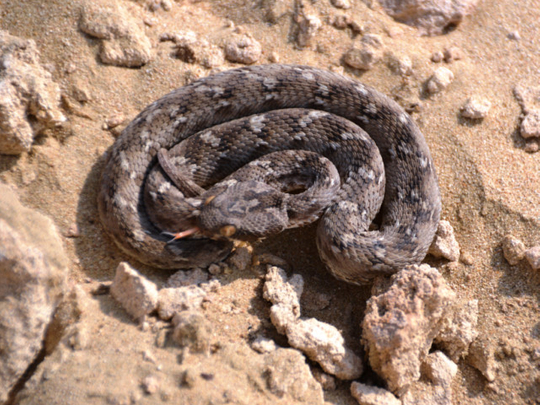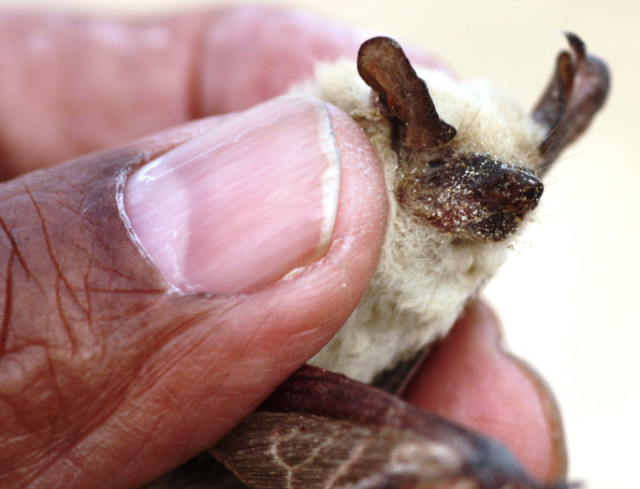
Dubai: Animals and plants that had “vanished” from Dubai for years have been spotted again recently, a new desert wildlife survey has found.
They reappeared after a five-year dry spell was broken by winter rains, said survey supervisor Dr Reza Khan.
The sightings include those of the UAE’s “deadliest” snake, the saw-scaled viper, and the country’s smallest bat, the Sind Batina Serotine.
Also found were grass varieties, such as the turgid panic grass and bristle grass, which are food for the Arabian oryx, gazelle, and hare.
Many local flowering plant species, too, have made a comeback, which attract birds and insects that depend on them — followed by their predators.
Also resurfacing were a variety of lizards, beetles, scorpions, butterflies and wasps.
Dr Khan, a wildlife and zoo management specialist at Dubai Municipality, said this chain reaction of sorts was sparked by heavy rain that washed away top layers of sand, exposing “diehard” seeds that stay dormant for years.
He added that many life forms had “virtually died in the areas” around Dubai, referring to deserts in Jebel Ali, Bab Al Shams, Hefair, and other places.
There had been a “complete disappearance of indigenous plants from vast stretches of desert between Abu Dhabi, Dubai and Al Ain due to the virtual absence of rain during the past five years or so”, he said.
“Recent rain has injected life in these areas.”
During the course of one day in the survey, which ended last week, Dr Khan said he found four of the tiny bats as well as the viper.
“It was the most memorable day for me as I’ve watched the wildlife of this country for the past 30 years or so. But I have never seen any species of bat resting under fragile sandstones, found in some parts of the desert in Bab Al Shams and Saih Al Salam,” Dr Khan said.
The bats were found lying apparently dead in a condition known as torpid, which is somewhat akin to hibernation in that the animal is in a deep state of rest.
“As the sun heated them, one after another they flew away, like ghosts becoming alive and flying to liberty. They all landed in nearby stony areas safely.”
The specimens were about eight centimetres long, with 20cm wingspans.
Dr Khan said life ebbs and flows in the deserts of the UAE and region with seasonal rain. At the root of the cycle are specially adapted plants.
“They have special adaptations to remain dormant for an appreciable period when there is no rain. Of these diehard desert plants, some bloom within a fortnight of the first good rain,” he explained.
“Flowers and young shoots of these plants are food for some birds, larvae of several butterflies, while wasps, beetles and bugs feed on flower pollen and nectar.”
The seeds of some of these plants are carried away and dispersed over wide swathes of desert, remaining dormant without rain for years.
“A soon as the first rain hits the desert, the ones close to the surface of the sandy area soon germinate, grow to mature plants that flower. The process continues for generations.
“The seeds that are buried deep inside sand can only germinate after heavy rain that moves sand and opens up seed deposits that grow in a matter of days.”
He added that the study is part of a wildlife survey programme for Dubai Municipality, particularly for its zoo section. The civic body plans to open a new zoo called Dubai Safari.
“We will be able to establish a catalogue or database of wildlife for Dubai. In the future, we will able to plan reintroduction of additional local animals for breeding in the proposed Dubai Safari,” he said.















